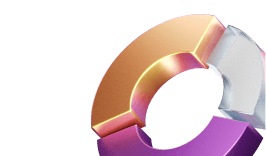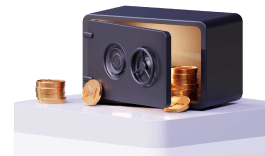Return on Assets Calculation and Formula
Return on assets or ROA for short is a specific metric that helps to determine, measure, and calculate the company’s profitability in terms of total assets it has. In other words, the return on assets ratio is a quite simple instrument that helps investors to compare and contrast different businesses by the funds it invests in assets along with net income.

In this article, we will define a simple return on assets formula to help beginners calculate the ratio and decide if a chosen company is worth investing in the long-term.
What Is ROA?
Return on assets ratio is used by investors to identify how good the company is performing. If the return is high, it means improved business productivity and efficient asset management. If the ratio is low, it shows improper funding and poor management, which means a company is a bad idea for investment.
Return on Assets Formula
To calculate ROA, you will need to identify the company’s net income, which is equal to annual net earnings and average assets (or end-of-period assets). The ROA formula is as follows:
ROA = Net Income / Average (End of Period) Assets
up to 200%

from 0 pips

Trading platform

Why Return on Assets Is Important?
It is a simple yet effective instrument that helps investors evaluate the company’s profitability. It makes it possible to compare and contrast business performance within a required timeframe. ROA can be applied either to explore a single company or compare two different organizations during the same period to highlight a more efficient and productive one.
If you want to compare two different companies, it is important they are of the same size and from the same industry. Different fields generally come with different return on assets ratios.
The same thing is when comparing two different businesses of different sizes, as some organizations use a larger amount of assets featuring higher net income.
The Use of Return on Assets Ratio for Investors
Investors can benefit from ROA calculation in many ways. Here are some common reasons how both traders and companies can take advantage of it:
- To determine business efficiency and profitability. It is the main reason why you should use ROA, especially if you are looking for long-term and risk-free investment opportunities.
- To compare two different companies. A great opportunity to select the best variant out of two possible investment options. However, you should avoid using cross-industry representatives and evaluate companies of the same size and field instead.
- To spot asset-light or intensive businesses. If the ratio is low, it means the company refers to the asset-intensive category (for example, airline company). If the ratio is high, a company represents an asset-light type (for example, a software development company).
When the calculation shows ROA over 20%, it means you deal with asset-light and good-performing business. If the ratio drops below 5%, you are probably dealing with an asset-intensive type of organization, which brings certain risks for investors in the long run.
This material does not contain and should not be construed as containing investment advice, investment recommendations, an offer of or solicitation for any transactions in financial instruments. Before making any investment decisions, you should seek advice from independent financial advisors to ensure you understand the risks.
